Best Women’s Midlayers of 2024
This article originally appeared on Outside
When the weather turns cold, you don't want to follow-which is why we tested the season's newest fleeces, puffies, active insulation, and uber-toasters to suss out the best midlayers for keeping women warm.
The Winners At A Glance
Jones Flagship Recycled Fleece Pullover
Strafe Basecamp Full Zip
FlyLow Felice Jacket
Ortovox Swisswool Piz Badus Jacket
Black Diamond First Light Hybrid Hoody
Helly Hansen Odin BC Hooded Light Insulator
Big Agnes Piney Mountain Jacket
Houdini Dunfri Jacket
Dynafit Tigard Down Jacket
The Reviews: Best Women's Midlayers of 2024
FLEECE
Jones Flagship Recycled Grid Fleece Pullover ($130)
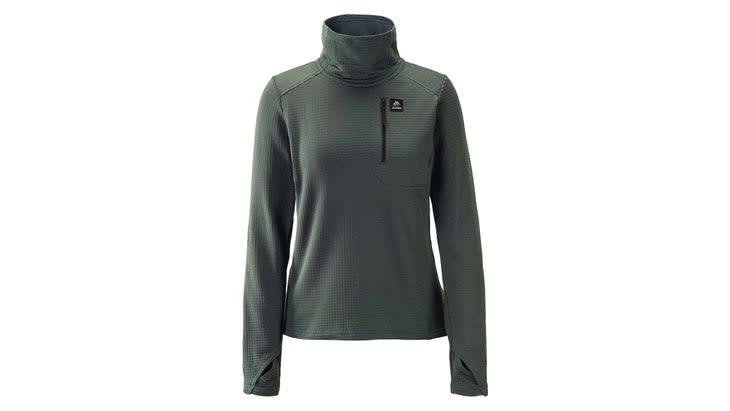
Best for: Hot laps on cold resort days
Weight: 10 oz
Sizes: XS-L
Offering the maximum cozy factor for minimal fuss, this pullover appeals to lift-riders who demand highly breathable insulation. The midweight Polartec Power Grid fabric includes channels that improve airflow, while squares of pile wick sweat and trap heat. Thus even without zippered venting options at the neck, testers reported good moisture management when cranking pow turns in temperatures below 25 degrees. Materials are Bluesign certified and 100 percent recycled. The low-bulk fabric provides better freedom of movement than many thicker constructions. And the zippered chest pocket keeps a phone handy and warm (to conserve battery life).
Bottom Line: The ideal layer to take with you on the most frigid resort days when you’ll still work up a sweat
Strafe Basecamp Full Zip ($179)
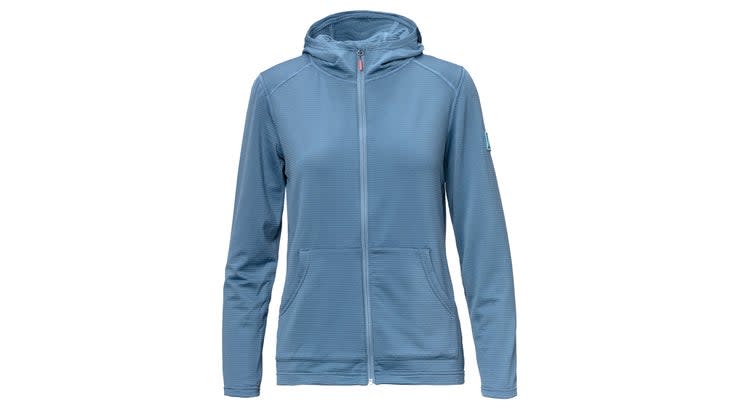
Best for: Backcountry ups and downs
Weight: 9 oz
Sizes: S-XL
A full-length zipper and gridded fleece make this a versatile midlayer that adapts to varying weather conditions. On spring tours that started in 35 degree Fahrenheit valleys, testers wore it unzipped for maximum air flow (gulleys between the fleece squares promote additional circulation) then battened it amidst cooling temperatures and gusty winds at treeline. The hood fits snug enough to stay put through stormy conditions. The lightweight polyester blend (with eight percent Spandex) offers enough stretch for unfettered movement, the hardened exterior resists abrasion from pack straps, and two hand pockets lend casual comfort and style off the snow.
Bottom Line: If you’ll be taking your skins on and off a hundred times on a tour, look to this layer
Flylow Felice Jacket ($140)
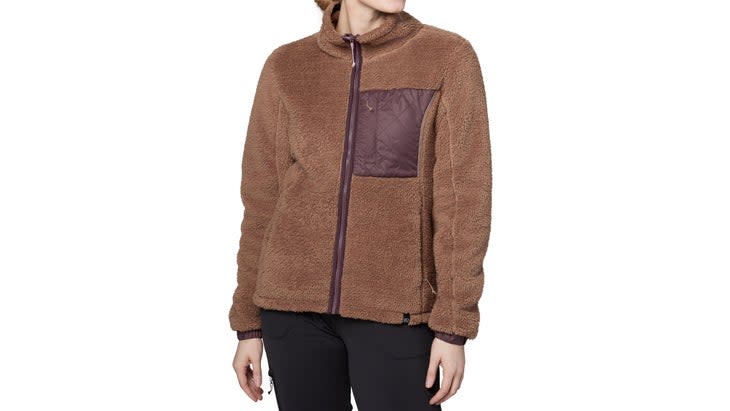
Best for: Minimizing outfit changes
Weight: 1.5 lb
Sizes: XS-XL
Plush, high-pile fleece makes this an irresistible insulator for plane rides and dog-park sessions, but it also performs on the resort: The 100 percent polyester uses an airy construction that kept our tester from steaming up during long bump runs and short bootpacks. The collar's generous cut accommodates helmet straps while buffering icy winds, and the hoodless design layers efficiently beneath a hooded shell. Silky polyester lining fabric across the upper back prevents annoying base-layer cling, and the chest pocket stashes a smartphone or pack of chewing gum. But it's a supertoaster: Our Gunnison, Colorado tester deemed it too warm for spring days topping 30 degrees Fahrenheit.
Bottom Line: Bring this layer with you on every trip and situation that will dip below freezing
LIGHT PUFFIES AND HYBRIDS
Ortovox Swisswool Piz Badus Jacket ($350)
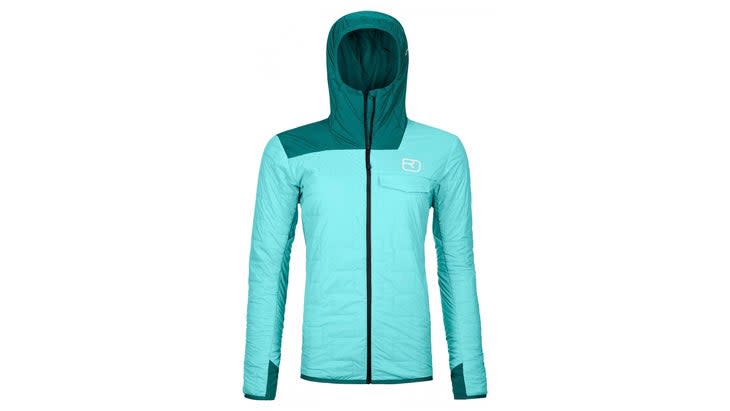
Best for: Fluctuating temperatures
Weight: 10 oz
Sizes: XS-XL
Our Lake Tahoe tester made this her daily uniform for backcountry, resort and town, because the wool-filled hybrid construction kept her comfy across a broad spectrum of conditions. During icy pre-dawn starts, the lightweight insulation provided impressive warmth: Baffled, 60-gram Swisswool padding and wind-resistant nylon fend off cold gusts and flurries (with PFC-free DWR), while the high collar and elastic-trimmed hood hug the face. Yet that insulation rarely felt oppressive once temps warmed into the 30s, thanks in part to stretch-knit underarm panels (blending Merino with recycled polyester and elastane) that dump steam and promote unfettered reach. Two zippered front pockets hold snacks and warm icy digits.
Bottom Line: Bring this layer with you on every trip and situation that will dip below freezing
Black Diamond First Light Hybrid Hoody ($275)
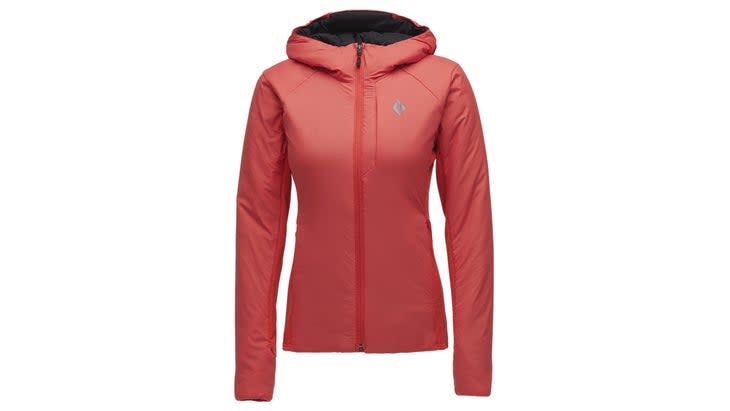
Best for: Bodies large and small
Weight: 11.2 oz
Sizes: XXS-XXXL
Offered in one of the widest range of sizes we've seen, this hybrid insulator brings superior performance to every body. Premium synthetic insulation (Primaloft Gold Active) fills the hood, chest and arms, topped with breathable, 20-denier stretch nylon that minimizes clamminess when worn alone or beneath a shell. Merino wool jersey across the back and underarms also dumps steam and kept our Steamboat tester dry through 2,500-foot ascents. The helmet-compatible hood and DWR finish (PFC-free) protect against flurries, and three zippered pockets keep a phone and inclinometer at the ready.
Bottom Line: For those who have trouble finding a mid-layer that actually fits
Helly Hansen Odin BC Hooded Light Insulator ($285)
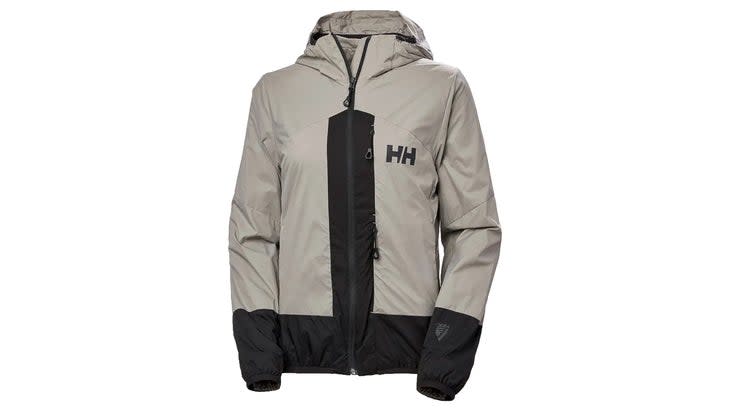
Best for: Touring in storms
Weight: 12 oz
Sizes: XS-XL
Built specifically for backcountry touring, this jacket aces the toughest test: Sweaty efforts in stormy conditions. The grid-like lining mops away moisture and kept testers from feeling swampy, no matter how hard they climbed. Its warmth proved just right for moving in 15deg-30deg temperatures. And the nylon shell (48 percent recycled) ably balances breathability and protection: The PFC-free DWR repels the Rockies' dry snow, while the dense weave buffers strong gusts. Some testers needed no hard shell when hiking in wild weather. Features are dialed: Along with three zippered storage pockets, a pass-through zipper speeds access to the internal beacon pouch.
Bottom Line: The best option for staying dry, inside and out
HEAVYWEIGHTS
Big Agnes Piney Mountain Jacket ($300)
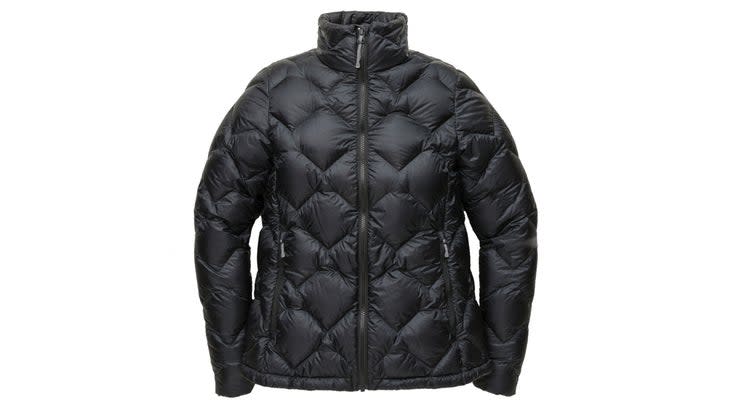
Best for: Lightweight packability
Weight: 7 oz
Sizes: XS-XL
Consider this an ultralight heavyweight. Made with tissue-thin, 12-denier nylon ripstop that's Bluesign-certified and coated with PFC-free DWR, this jacket packs to pineapple-size and weighs no more than your avalanche beacon. Yet it's toasty: Diamond quilting promotes maximum puffiness from the 850-fill, RDS-certified down. The plumes' water-repellent treatment maintains loft through humid conditions (actual precipitation calls for an additional, waterproof shell) and there's no hood to get soaked by storms. And features aren't minimalist: Two internal drop pockets and two zippered hand pockets stash gloves and hand warmers.
Bottom Line: For long days when you know you’ll need extra warmth without the weight, look to this layer
Houdini Dunfri Jacket ($320)
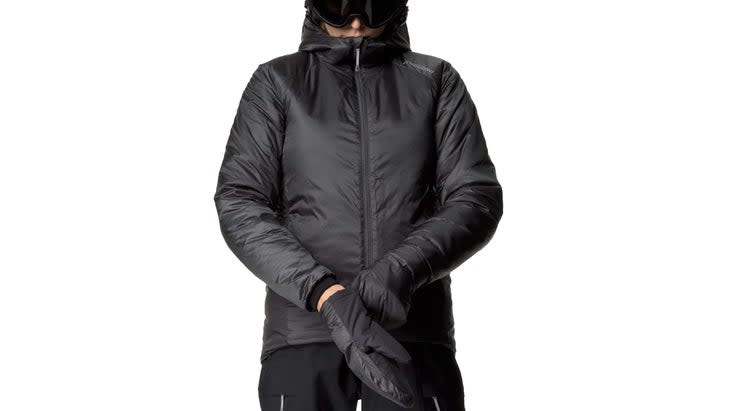
Best for: Wet-weather warmth
Weight: 13.1 oz
Sizes: XXS-XL
Don't be fooled by its middling appearance: This jacket is way warmer than its low-bulk construction would suggest. Filled with Primaloft Gold synthetic insulation, it delivers instant warmth and kept our Steamboat tester comfortable through 5degF ski tours. In warmer conditions, it proved itself an unsoakable emergency layer: The Bluesign-approved polyester seals out most gusts and all but the heaviest precipitation. Though breathability isn't terrific, the two zippered hand pockets double as vents. Fabric and insulation use 100 percent recycled content, and the jacket is recyclable: Houdini turns returned garments into new goods.
Bottom Line: On cold, wet, days, this layer is your best bet
Dynafit Tigard Down Jacket ($400)
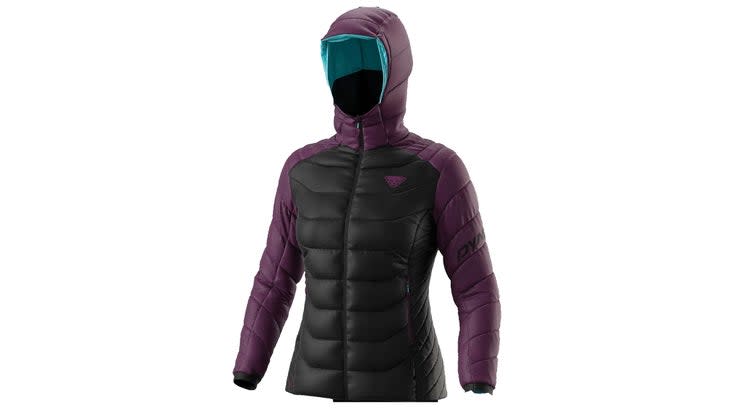
Best for: Toasty transitions
Weight: 1 lb
Sizes: XS-XL
Most puffies--especially superwarm ones--restrict movement with baffles that bind when wearers bend and reach. Not so the Tigard, which angles the arms' quilting to minimize pinching and let testers enjoy full freedom of movement when stripping climbing skins. The recycled, 700-fill down kept our Steamboat tester warm during breaks in 6 degrees Fahrenheit, when she barely registered 35 mph wind (the 100 percent recycled nylon uses a dense weave for wind and water repellency). The PFC-free DWR prevented snow from soaking the plumes, an adjustable, wire-brimmed hood provides refuge amidst storms, and five pockets (two hand pockets, two interior drop pouches and a zippered chest pocket) hold all the things.
Bottom Line: Pack this puffy when you’re expecting cold, windy conditions and lots of transitions
How to Buy Women's Midlayers
Midlayers range in breathability and warmth, so it helps to identify your particular needs. If you expect to be generating a lot of heat and sweat (during uphill touring or high-output resort laps), look for fleece or hybrid insulation that maximizes breathability by minimizing its use of moisture-trapping shell fabric (including the materials typically used to make puffy jackets). Thinner fabrics under the arms and collars with zippers for venting are also helpful in mitigating clamminess. That's important, because in cold weather, wearing damp clothing makes it hard to stay warm.
Insulations also vary in their ability to handle moisture from sweat or snow. Down is famously susceptible to wetness, and although some jackets now use hydrophobic down that's treated with a coating that keeps it lofty in damp conditions, people who sweat a lot or who exercise in wet climates should opt for synthetic fill (such as those made by PrimaLoft) or ultra-breathable "active" insulations (such as Polartec Alpha).
When it comes to warmth, more isn't always better. Plump, super-toasty jackets are best worn when you're not moving (like when you're switching your touring gear from uphill to downhill mode) or when you're moving slowly (maybe you're skiing with a group that's more tortoise to your hare). These are intended to trap heat rather than release it, so save these for the "stop" portion of your "stop and go" activities.
How We Test
Number of testers: 7
Number of products tested: 51
Number of test days logged: 300-plus
Coldest temperature experienced: -24F
Incidences of frostbite: 0
Our testers range in fitness and skill, but all are passionate about winter sports-and all live amidst immediate opportunities for skiing, hiking, touring, camping, and lift-riding. One is a self-described "heavy sweater," while two others fall into the "always cold" camp. Some ride lifts and hammer powder laps before work; others spike their heart rates on Nordic skis; several hike and run on packed snow and ice; all wear technical insulation during apres. They received sample products from January through March, and tested them during both exercise and rest to gauge the gear's breathability, heat retention, and weather protection.
Meet Our Testers
Test coordinator Kelly Bastone lives within a mile of the lifts at Steamboat Ski Resort, where she skis both downhill and up (thanks to resort management that allows uphill touring before and after daily lift operations). Bastone also chases backcountry powder and seeks out helpings of humble pie on the area's abundant Nordic trail network. Where she lives, winter extends through early May (and with June afternoons registering just 50 degrees Fahrenheit, summer seems unusually slow to arrive). Her roster of testers includes Minnesotans Kate Ratkovich and Ashley Gil de Lamadrid, Lake Tahoe backcountry and resort skiers Molly Street and Jessica Hamilton, and Crystal Lambert from Gunnison, Colorado, which routinely ranks among the coldest places in the United States.
For exclusive access to all of our fitness, gear, adventure, and travel stories, plus discounts on trips, events, and gear, sign up for Outside+ today.

